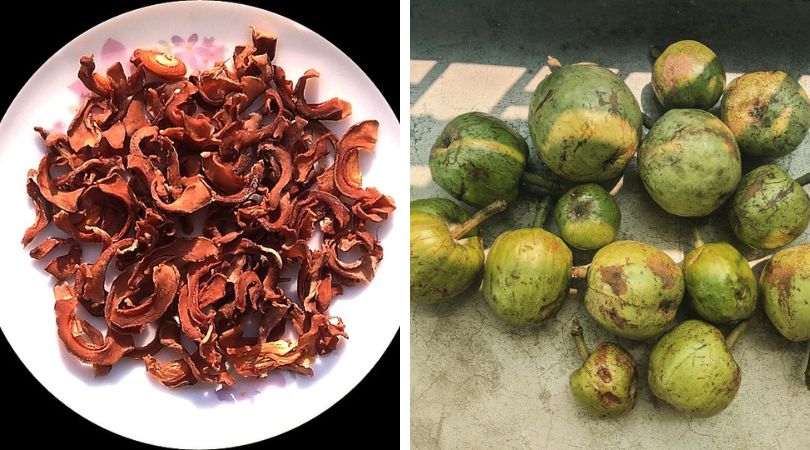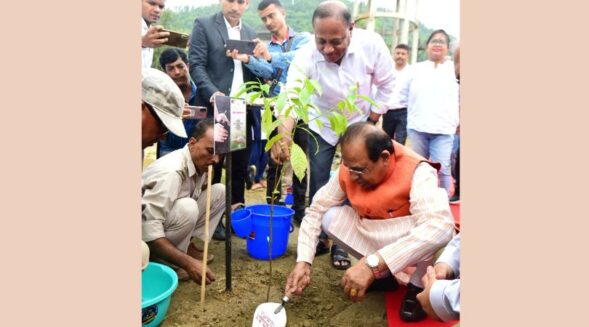
GUWAHATI:
Garcinia pedunculata, a medicinal plant commonly called ‘Borthekera’ in the Assamese language, traditionally forbidden for raw consumption, has been found to protect from heart diseases.
Administration of the dried pulp of the ripe fruit of the medicinal plant reduced cardiac hypertrophy indicators and oxidative stress and heart inflammation brought on by ISO.
The sun-dried slices of the ripe fruit are used for culinary and medicinal purposes and are known to have therapeutic properties like anti-inflammatory, anthelmintic, antibacterial, antifungal, antidiabetic, hypolipidemic, nephroprotective, and even neuroprotective activity.
With scientific interventions seeking proof of these claims, multiple studies have reported that Garcinia pedunculata is a rich source of antioxidants. However, the cardioprotective potential was yet to be explored.
Scientists of Institute of Advanced Study in Science and Technology (IASST), an autonomous institute of the Department of Science and Technology (DST), explored this medicinal plant’s potential to prevent heart diseases. A double dosage of bioactive chloroform fraction (GC) of the herb was fed to Wistar rats at 24-hour intervals (85mg/kg body weight (BW) for 28 days.
To assess the therapeutic effect, this was followed by injection of is oproterenol following the isoproterenol-induced myocardial infarction model. All the animals were analyzed, revealing that the disease group had significant ST wave (ST is the segment representing the interval between depolarization and repolarization of the heart’s ventricles) elevation, indicating myocardial infarction, which was normalized with Atenolol and GC treatment.
Cardiac hypertrophy, cardiac troponin I, tissue lipid peroxidation, and serum inflammatory markers were all significantly elevated in the disease group, which were maintained at near-normal levels in the GC pretreated groups. The endogenous antioxidants were also revamped in the GC-treated groups.
Swarnali Bhattacharjee, SRF, under the supervision of Dr Rajlakshmi Devi, have attributed these improvements to the excellent antioxidant and anti-inflammatory potential of GC that helped protect the heart against isoproterenol-induced injury.
Moreover, the chemical characterization of the chloroform fraction revealed the presence of active phytocompounds like hydroxy citric acid, hydroxy citric acid lactone, and parvifoliquinone along with compounds like GB-1a, Garcinone A, 9-Hydroxycalabaxanthone, Chlorogenic acid, and Garcinol as well. The therapeutic effects reported in this study are likely due to the presence of all these compounds. All these results strongly infer the good cardioprotective potential of G. pedunculata fruit abundantly available in the Northeast.
“Borthekera is specially used for heart and anti-obesity because of the presence HCA (Hydroxy Citric Acid),” said Jatindra Sarma, director, Kaziranga National Park and Tiger Reserve and the member secretary of State Medicinal Plant Board, Assam.
In his book “Medicinal Plants And Mushrooms Of India (Volume I)”, Sarma wrote: “It is used in the case of dysentery, the pericarp is sliced and dried to make refreshing drinks. The water extract of the sun-dried slices, soaked overnight, is used as a thirst-relieving drink on hot summer days. The fruit is having anti-obesity and anti-diabetic properties due to the presence of Hydroxy Citric Acid (HCA).”
“The pleasantly acidic fruit is eaten raw and also cooked as curries. It is cut into slices dried and stored for prolonged and timely use, especially during the summer days. The fruit is effective in jaundice,” Sarma, who mentioned about 22 species of thekeras in the book, said.
“The fruit of Borthekera is used in liver and spleen diseases, dyspepsia, cough, respiratory disorders, ulcers and skin diseases. It is also used as a cardio-tonic. The pericarp is a source of natural anti-oxidant as established in recent research studies,” he added.






